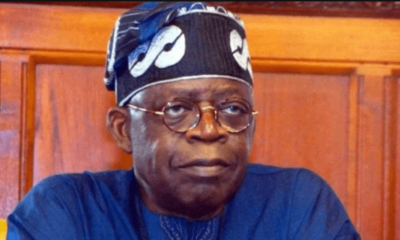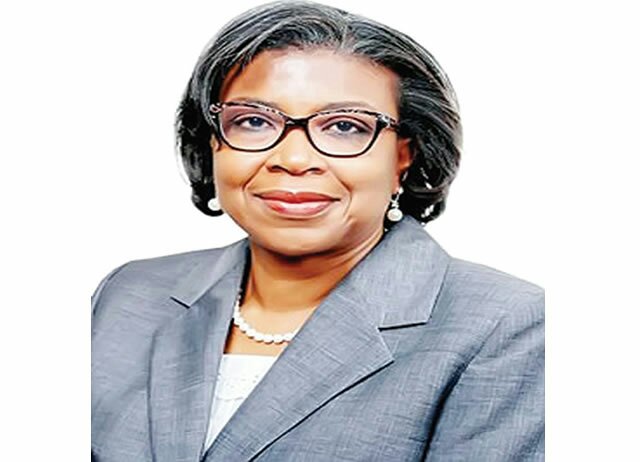News
FG, states grow external debt by 114% under Buhari
The Federal Government and the 36 states of the federation as well as the Federal Capital Territory grew the country ’ s external loan commitments from $ 10 . 32 bn in June 2015 to $ 22 . 07 bn in March 2018, investigation has shown.This reflects an increase of $ 11 . 76 bn or 113 . 94 per cent growth in the country ’ s external debt within 33 months . The period is within the presidency of Muhammadu Buhari, as he took over the reins of government on May 29 , 2015 .
In naira terms , statistics obtained from the Debt Management Office in Abuja on Monday showed that the country ’ s external loans rose from N 2 . 03 tn as of June 31 , 2015 to N 6 . 75 tn as of March 31 , 2018. This reflects an increase of 232 . 51 per cent .
The difference , when the external debt is denominated in naira , reflects the beating that the local currency has taken since 2014 following the dwindling of the nation’ s capacity to accumulate foreign currencies as a result of the steep fall in the price of crude oil , the main foreign exchange earner for the country .
The domestic debt of the country rose from N 10 . 09 tn as of June 2015 to N 15 . 96 tn as of March 2018. This reflects an increase of N 5 . 87 tn or 58 . 23 per cent within the period of analysis .
Taken together , the country ’ s public debt rose from N 12 . 12 tn as of June 31 , 2015 to N 22 . 71 tn as of March 31 , 2018. This reflects a difference of N 10 . 59 tn or a percentage increase of 87 . 37 per cent within a period of 33 months .
Broken down , the Federal Government component of the domestic loans stood at N 12 . 58 tn , while the states ’ component stood at N 3 . 38 tn as of March 2018.
The increasing percentage of the external loans is a reflection of the country ’ s current debt management strategy , which targets to raise the debt ratio to 40 per cent external and 60 per cent local.
As of June 2015, the ratio stood at 16 . 77 per cent for external and 83 . 23 per cent for domestic. As of March 2018 , it stood at 27 . 71 per cent external and 72 . 29 per cent domestic. Currently, there are ongoing foreign loans deals and negotiations that can bring the nation nearer to the 40 per cent target .
The country ’ s Debt Management Strategy 2016– 2019 made a case for an increase in external financing with a view to rebalancing the public debt portfolio in favour of long -term external financing in order to reduce the debt service cost and lengthen the maturity profile .
In the document , the DMO stated , “ To achieve a significant reduction in cost would require that the government accesses relatively cheaper long – term external financing in such a way that it first maximises the available funds from the concessional and semi -concessional sources , taking into account what may be readily available within a given period , after which other external sources would be accessed .
“Further lengthening of the maturity profile of the domestic debt portfolio through reduction in the issuance of new short-dated debt instruments or refinancing of maturing NTBs with external financing or both .
“Although the impact on cost of the introduction of new debt instruments into the domestic debt market is expected to be relatively small , the impact on maturity profile of total domestic debt could be significant ; hence , reducing the risk of bunching , roll -over risk , and the associated debt servicing costs. ”
The Federal Government had in 2017 borrowed from the international capital market to refinance $ 3 bn maturing domestic debts as part of its overall debt management strategy of reducing debt service costs.
Follow us on social media:-

 Celebrity Gossip & Gist2 days ago
Celebrity Gossip & Gist2 days ago“The money wey dem pay me don expire” – Moment Burna Boy stops his performance at the Oando PLC end of the year party (Video)
-

 Economy2 days ago
Economy2 days agoGoods worth millions of naira destroyed as fire guts spare parts market in Ibadan
-

 Celebrity Gossip & Gist19 hours ago
Celebrity Gossip & Gist19 hours agoMoment stage collapses on Odumodublvck during concert performance (Video)
-

 Economy19 hours ago
Economy19 hours agoPresident Tinubu cancels Lagos engagements in honor of food stampede victims





